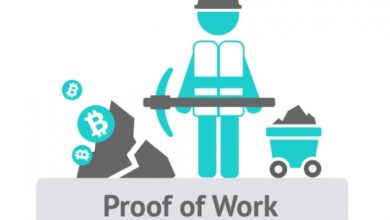Technology
Blockchain in Disaster Relief – Catastrophe Bonds and Crypto Donations
A new financial market based on the blockchain technology has emerged

If we consider that “disasters are not natural”, and only hazards are natural, we could readily admit that the costs of these events are more and more out of the ordinary, and in some way “not natural”. As an example, the insured losses from catastrophes in 2018 were $85 billion, the fourth-highest for a single year, and above the annual average of the previous ten years of $71 billion.
As the traditional ways to mobilize funds to mitigate the impacts of disasters are showing their limits, including traditional or classic insurance, it’s interesting to look to a new financial market based on the blockchain technology. Blockchain is known for three majors’ aspects: secured registry, smart contracts and cryptocurrencies. However, we’ll focus here only on the two last one.
Smart contracts
Hurricane Andrew, in 1992, has shown the limits of the traditional insurance model. Therefore, we witnessed the growth of alternatives, as catastrophe bonds, that blockchain can develop.
A Cat bond is an instrument designed to raise money for companies in the insurance industry in the event of a disaster. It is an instrument that transfers risk from one party to another. A Cat bond is issued on specific conditions, such as an earthquake or hurricane. These bonds, first marketed in the 1990s, enables insurance and reinsurance companies to transfer the risk to investors.
Catastrophe bonds are available to parties that offer a high level of trust, as there is a risk they might not be repaid. Large cities, such as San Francisco or Tokyo, are considered trustworthy, and they can use these bonds to cover for damages caused by natural disasters.
Let’s put it this way. At the beginning of the year, investors will agree on a bond amount to be delivered to the city of San Francisco in case of a disaster. If throughout the year, the disaster occurs, the bond is triggered, and the money to carry out emergency services and repair damages is released. The obligation to repay the bond or the interest is deferred. If the triggering event doesn’t occur, San Francisco has to return the amount, plus a premium, which is usually above the fixed interest rate.
The implementation of this mechanism can be programmed on a blockchain and executed through a smart contract. The smart contract will generate the payment instantly to the issuer, removing delays between insurers and investors that can drag on for weeks, sometimes months, after a disaster. Contrariwise, the smart contract, according to the terms agreed, will order the repayment to the investors while taking into account the interests generated. Cat bonds have short maturities not exceeding three to five years which make them interesting for the investors.
In 2016, Allianz reported it has successfully used blockchain-based smart contracts to handle catastrophe swaps and bonds. Another well-known use case which demonstrates the feasibility of such a system is Fizzy. Fizzy is a flight delay insurance tool that belongs to AXA which uses blockchain to ensure that insured travellers whose flights are delayed more than two hours are immediately compensated. It uses Ethereum Smart Contracts to guarantee the transparency and immutability of the insurance policy. Unfortunately, AXA has recently announced the end of their experience.
Blockchain can also be used successfully in index-based insurance. As explained above, a smart contract can be used to execute a deal when the terms agreed are met. When, for example, in agricultural insurance, the insurer’s intervention is linked to a rainless period, the payment could be generated immediately to the insured when the event occurs. There is no need for the insured to make claims; the technology does it for them. Therefore, the use of smart contract decuples the speed of the insurer intervention, and consequently increase the resilience of the insured.
Cryptocurrencies
With the development of cryptocurrencies, blockchain has shown its abilities to mobilize funds, beyond crowdfunding such as Initial Coin Offerings (ICO), Security Token Offerings (STO) and Initial Exchange Offerings (IEO).
Last year, we saw how the crypto community was mobilized in the face of charity donations. When the Amazon rainforest was burning, organizations called for crypto contributions to protect the forest and fund initiatives. Indeed, crypto donations have been creating a new model for humanitarian aid.
Recently, the United Nations Children’s Fund (UNICEF) announced plans to use cryptos to fund a project that would bring the internet to public schools. Indeed, the organization intends to use cryptos donated by several organizations, including the Ethereum Foundation, to fund the project. UNICEF introduced a crypto fund that can distribute, hold, and receive Ether and Bitcoin donations.
At the end of last year, #BitcoinTuesday – inspired in Giving Tuesday – made the headlines through one day dedicated to charitable causes, calling for donations in the form of crypto to hundreds of pre-registered organizations.
Binance, one of the top crypto exchanges, highlighted the lack of transparency that can exist in crypto-based donations and spoke about the need for clear crypto-based charity donation solutions.
It’s undeniable that the use of blockchain is unveiling different ways to deal with disaster relief. In terms of disaster preparedness, blockchain can be used to fund projects related, for example, to building resilient infrastructure against a specific natural hazard. It can also help to fund projects aiming to create innovating early warning system and implement them. The traceability of the transactions made through blockchain could also be a way to discourage mismanagement.




https://indianpharmacy.pro/# top online pharmacy india